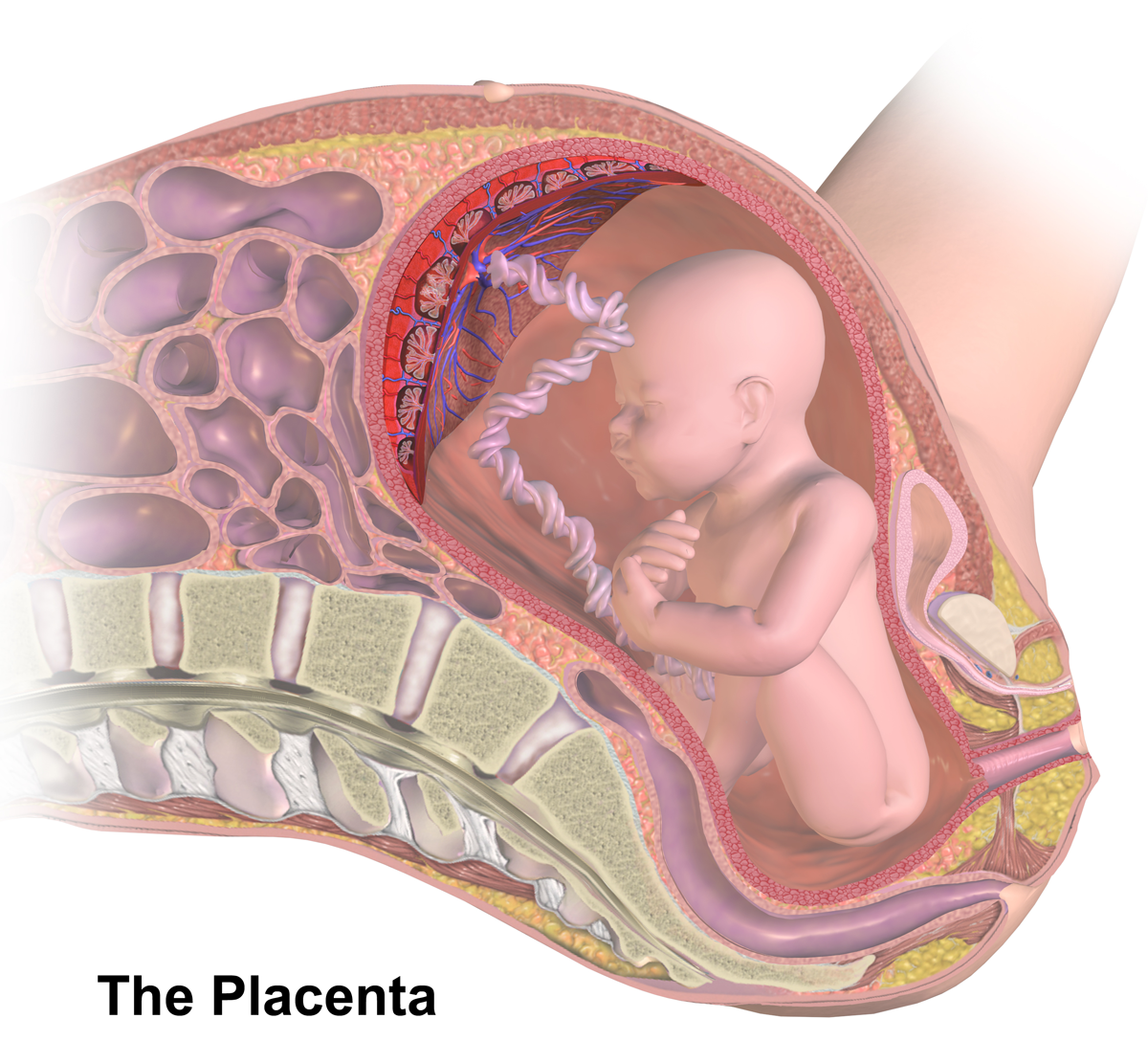|
RTL1
RTL1 (retrotransposon like 1) is a retrotransposon derived protein coding gene. It is also known as PEG11 and is a paternally expressed imprinted gene, part of genomic imprinting. RTL1 plays an important role in the maintenance of fetal capillaries and is expressed in high quantities during late stage of fetal development. The expression of this gene is important for the development of the placenta, the fetus-maternal interface. Because the placenta is the first organ to form during the development of an embryo, problems in its establishment and biological role lead to complications during gestation. This organ maintains the fetus throughout the pregnancy and is therefore sensitive to disruptions. Studies in mice suggest that disruption of the RTL1 concentration, whether increasing or decreasing the amount of this protein coding gene, can lead to serious errors in the conservation of placental fetal capillaries. RTL1 knockout mice have shown obstruction in fetal development along ... [...More Info...] [...Related Items...] OR: [Wikipedia] [Google] [Baidu] |
Retrotransposon
Retrotransposons (also called Class I transposable elements or transposons via RNA intermediates) are a type of genetic component that copy and paste themselves into different genomic locations (transposon) by converting RNA back into DNA through the reverse transcription process using an RNA transposition intermediate. Through reverse transcription, retrotransposons amplify themselves quickly to become abundant in eukaryotic genomes such as maize (49–78%) and humans (42%). They are only present in eukaryotes but share features with retroviruses such as HIV, for example, discontinuous reverse transcriptase-mediated extrachromosomal recombination. These retrotransposons are regulated by a family of short non-coding RNAs termed as PIWI -element induced wimpy testisinteracting RNAs (piRNAs). piRNA is a recently discovered class of ncRNAs, which are in the length range of ~24-32 nucleotides. Initially, piRNAs were described as repeat-associated siRNAs (rasiRNAs) because of thei ... [...More Info...] [...Related Items...] OR: [Wikipedia] [Google] [Baidu] |
Placenta
The placenta is a temporary embryonic and later fetal organ (anatomy), organ that begins embryonic development, developing from the blastocyst shortly after implantation (embryology), implantation. It plays critical roles in facilitating nutrient, gas and waste exchange between the physically separate maternal and fetal circulations, and is an important Endocrine system, endocrine organ, producing hormones that regulate both Maternal physiological changes in pregnancy, maternal and fetal physiology during pregnancy. The placenta connects to the fetus via the umbilical cord, and on the opposite aspect to the maternal uterus in a species-dependent manner. In humans, a thin layer of maternal decidual (Endometrium, endometrial) tissue comes away with the placenta when it is expelled from the uterus following birth (sometimes incorrectly referred to as the 'maternal part' of the placenta). Placentas are a defining characteristic of placental mammals, but are also found in marsupials an ... [...More Info...] [...Related Items...] OR: [Wikipedia] [Google] [Baidu] |
Knockout Mouse
A knockout mouse, or knock-out mouse, is a genetically modified mouse (''Mus musculus'') in which researchers have inactivated, or " knocked out", an existing gene by replacing it or disrupting it with an artificial piece of DNA. They are important animal models for studying the role of genes which have been sequenced but whose functions have not been determined. By causing a specific gene to be inactive in the mouse, and observing any differences from normal behaviour or physiology, researchers can infer its probable function. Mice are currently the laboratory animal species most closely related to humans for which the knockout technique can easily be applied. They are widely used in knockout experiments, especially those investigating genetic questions that relate to human physiology. Gene knockout in rats is much harder and has only been possible since 2003. The first recorded knockout mouse was created by Mario R. Capecchi, Martin Evans, and Oliver Smithies in 1989, for ... [...More Info...] [...Related Items...] OR: [Wikipedia] [Google] [Baidu] |
Muscle Hypertrophy
Muscle hypertrophy or muscle building involves a hypertrophy or increase in size of skeletal muscle through a growth in size of its component cells. Two factors contribute to hypertrophy: sarcoplasmic hypertrophy, which focuses more on increased muscle glycogen storage; and myofibrillar hypertrophy, which focuses more on increased myofibril size. It is the most major part of the bodybuilding-related activities. Hypertrophy stimulation A range of stimuli can increase the volume of muscle cells. These changes occur as an adaptive response that serves to increase the ability to generate force or resist fatigue in anaerobic conditions. Strength training Strength training (resistance training) causes neural and muscular adaptations which increase the capacity of an athlete to exert force through voluntary muscular contraction: After an initial period of neuro-muscular adaptation, the muscle tissue expands by creating sarcomeres (contractile elements) and increasing non-contractile ... [...More Info...] [...Related Items...] OR: [Wikipedia] [Google] [Baidu] |



